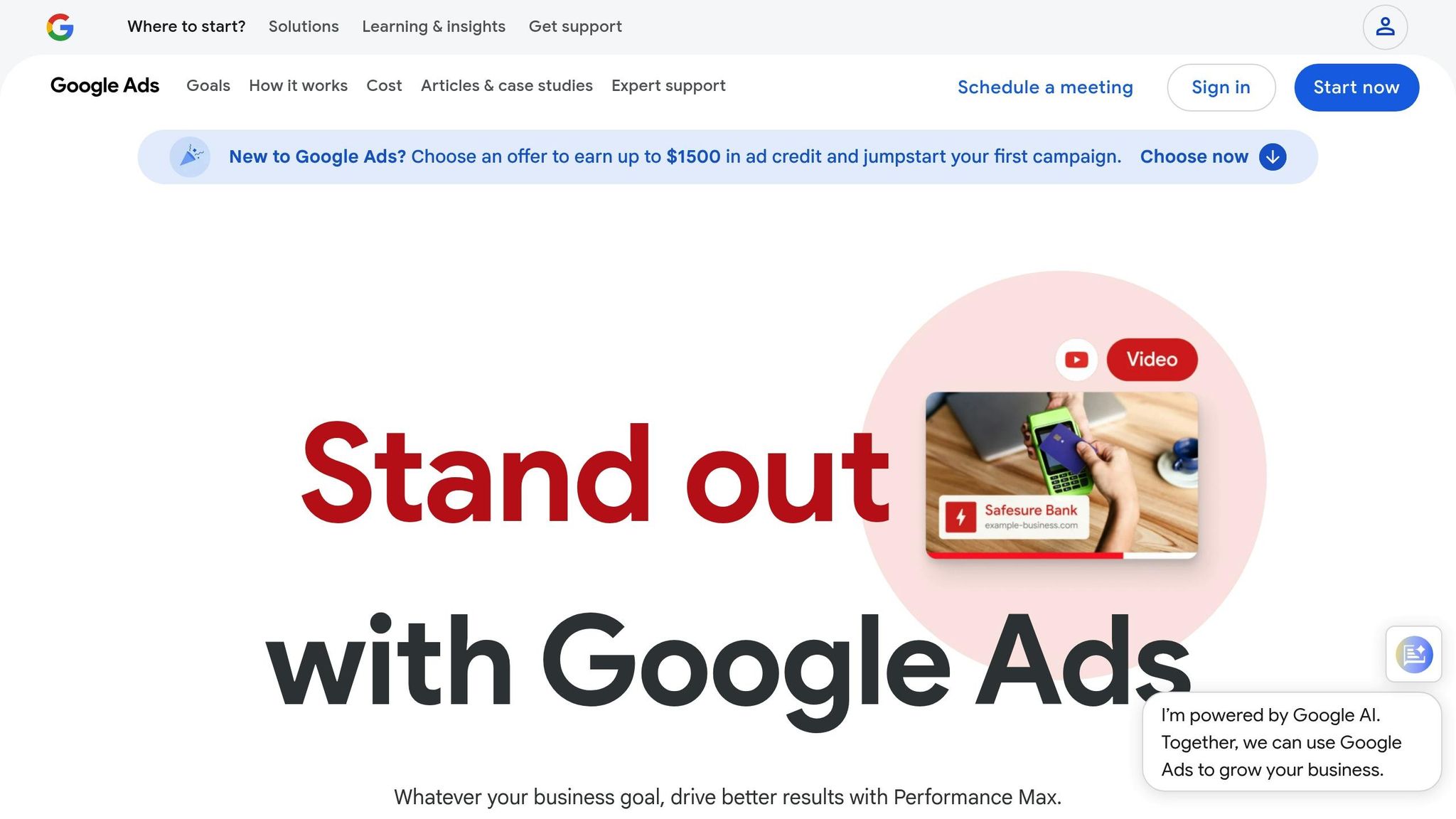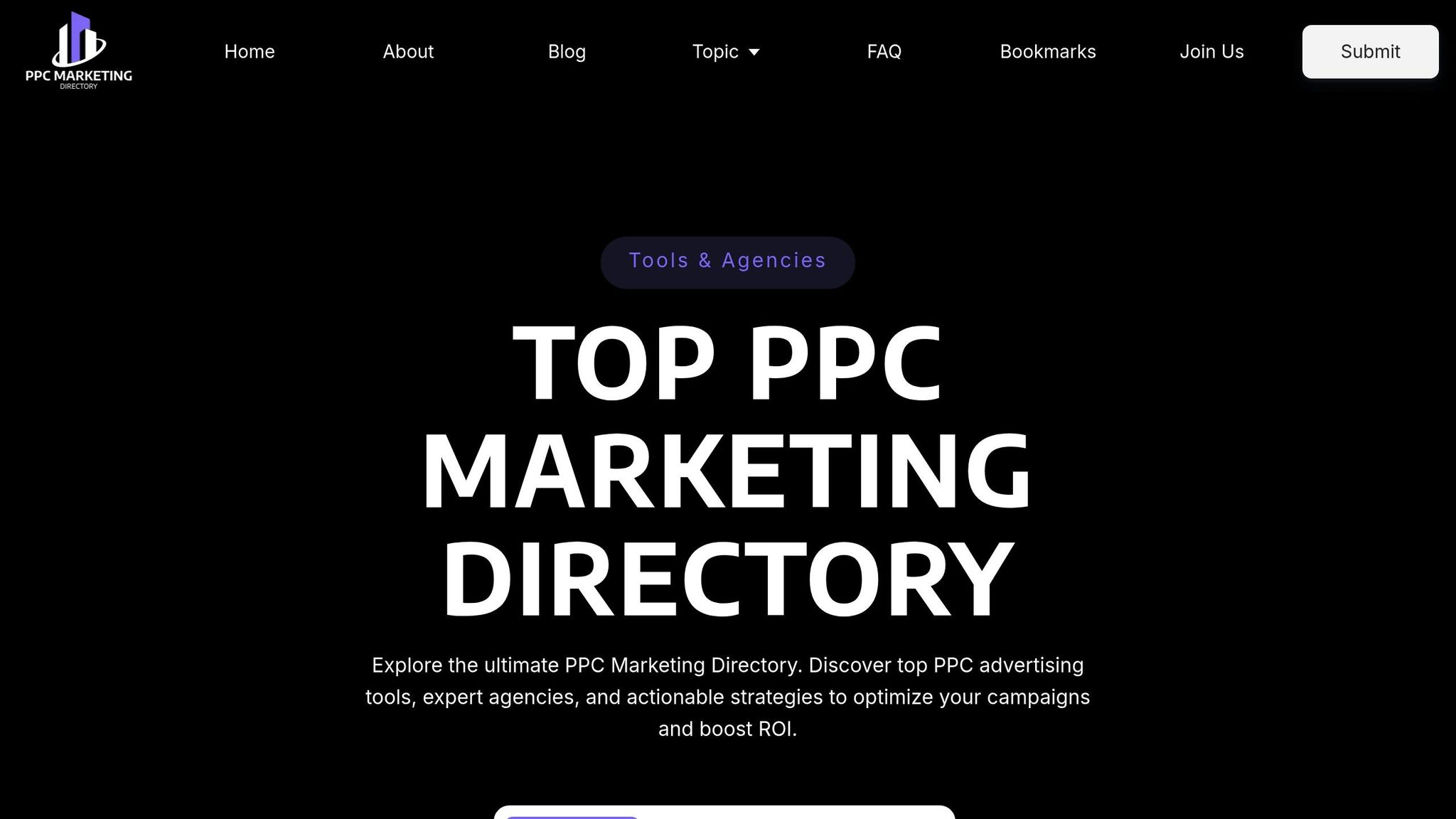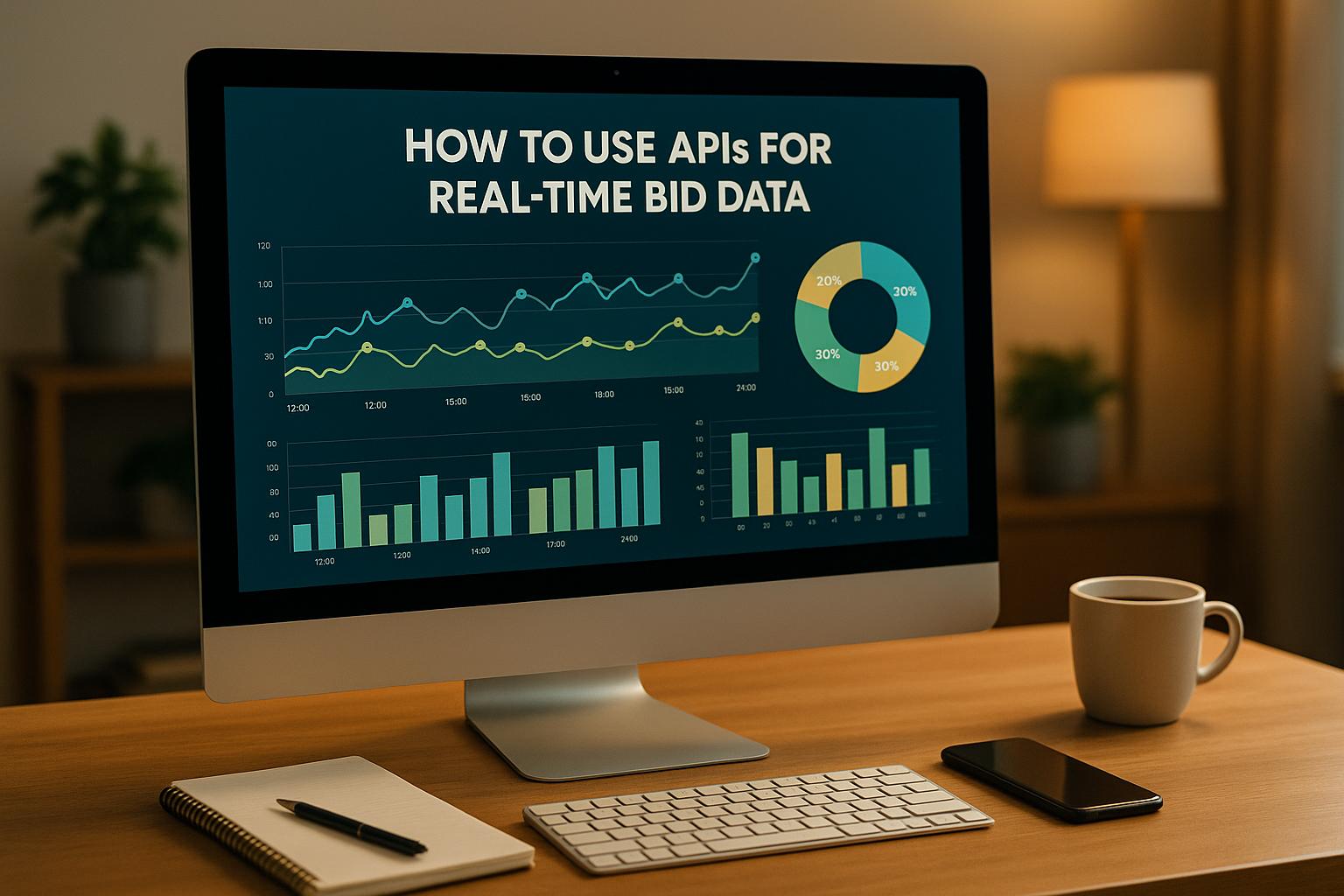Tracking lead quality in PPC campaigns ensures your ad spend turns into real business results, not just vanity metrics. Here's the takeaway: prioritize quality over quantity to drive conversions, reduce costs, and improve alignment between marketing and sales.
Key Insights:
- What matters most? High-quality leads show strong intent, align with your target audience, and engage meaningfully with your site.
- Why focus on quality? Better leads mean higher conversion rates, lower acquisition costs, and better sales productivity.
- Metrics to track: Go beyond clicks and impressions. Focus on conversion rates, lead-to-sale rates, and revenue per lead.
- Tools and setup: Integrate PPC platforms, analytics tools, and CRM systems. Use lead scoring and UTM tracking for deeper insights.
- Actionable steps: Shift budgets to high-performing campaigns, refine ad copy, and optimize targeting based on data.
By focusing on lead quality, you’ll ensure your PPC campaigns contribute directly to revenue growth. Let’s break it down further.
Improve Lead Quality in Google Ads Using Offline Conversion Tracking - Advanced Google Ads Training

What Is Lead Quality in PPC
Lead quality in PPC refers to how closely a lead matches your ideal customer profile and their likelihood of becoming a paying customer. A high-quality lead is someone actively searching for what you offer, clicking on your ad with a clear purpose, and taking meaningful steps on your website.
On the flip side, low-quality leads might click on your ad by mistake, provide fake information, or show no genuine interest in buying. These leads waste both your ad spend and your sales team's time.
Here’s an example to put it into perspective: a campaign that generates 100 high-quality leads will often outperform one with 500 low-quality leads. While the second campaign might look better at first glance, the quality of the leads ultimately determines the success of your efforts.
Let’s break down what makes a lead high-quality.
How to Identify High-Quality Leads
High-quality leads share several key traits:
- Strong purchase intent: These leads actively engage with your content, whether by exploring pricing pages, requesting demos, or downloading product guides. Their actions clearly show they’re evaluating your solution.
- Alignment with your target audience: The best leads fit your ideal customer profile. This includes factors like company size, industry, job role, location, and budget. For instance, if you sell enterprise software, a lead from an IT director at a Fortune 500 company is far more valuable than one from a college student.
- Meaningful engagement: High-quality leads interact deeply with your website. They may watch product videos, read case studies, visit multiple pages, or spend significant time on your site. Their behavior signals curiosity and genuine interest rather than casual browsing.
- Accurate details: Quality leads provide valid contact information, such as business email addresses and thoughtful responses on forms. You’re not dealing with fake names like "John Doe" or throwaway email accounts.
- Timing and urgency: Leads with an immediate need or a clear project timeline are more likely to convert quickly. For example, someone searching for "CRM software implementation Q1 2026" is more promising than someone casually looking up "what is CRM software."
These characteristics help you distinguish valuable leads from those unlikely to convert.
Why Lead Quality Beats Lead Volume
Focusing on lead quality has a direct impact on your bottom line. While it might be tempting to chase higher lead numbers, prioritizing quality leads to better results across the board.
- Higher conversion rates: Quality leads are more likely to become paying customers, which means your marketing efforts translate into revenue more efficiently.
- Lower acquisition costs: By targeting the right audience, you avoid spending money on clicks and leads that won’t convert, stretching your advertising budget further.
- Boosted sales productivity: When your sales team works with qualified leads, they can focus on building relationships and closing deals instead of wasting time on unqualified prospects. This leads to shorter sales cycles, higher close rates, and a more motivated team.
- Improved customer lifetime value: Leads that come from targeted campaigns are a better fit for your product or service. They’re more likely to stick around, make repeat purchases, and recommend your business to others.
- Stronger marketing and sales alignment: When marketing consistently delivers quality leads, sales teams trust the process. Both departments can then work together toward shared revenue goals instead of competing over metrics.
Lead Quality Metrics to Track
To truly understand lead quality, you need to look beyond surface-level metrics like clicks and impressions. Instead, focus on metrics that connect your PPC efforts to actual business outcomes.
While metrics like leads or click-through rates may appear impressive in reports, they don’t necessarily indicate whether those leads are worth the investment.
Conversion Rate and Cost Per Conversion
Conversion rate measures how well your campaigns turn clicks into meaningful actions, like filling out forms, requesting demos, or making purchases. It’s calculated by dividing the number of conversions by the number of clicks, then multiplying by 100. For example, if 2,000 clicks result in 50 conversions, your conversion rate is 2.5%.
Cost per conversion tells you how much you’re spending to generate each lead or sale. To calculate this, divide your ad spend by the number of conversions. For instance, if you spend $5,000 and generate 100 conversions, your cost per conversion is $50.
Together, these metrics help assess campaign efficiency. For example, a campaign with a 5% conversion rate and a $25 cost per conversion is typically more effective than one with a 10% conversion rate but a $75 cost per conversion, especially when factoring in lead quality.
To gain deeper insights, track conversion rates and costs across campaign types, ad groups, and keywords. This granular approach can reveal surprising trends. For instance, branded keywords might have higher conversion rates but generate lower-quality leads, while long-tail keywords may produce fewer conversions but better prospects.
The next step is evaluating how these leads convert into paying customers.
Lead-to-Sale Rate and Revenue Per Lead
Lead-to-sale rate measures the percentage of leads that become paying customers. For example, if 30 out of 200 leads convert, your lead-to-sale rate is 15%. This metric bridges the gap between marketing and sales, offering a clearer picture of PPC performance.
To calculate, divide the number of leads that became customers by the total number of leads over a given period.
Revenue per lead shows the average revenue generated by each lead. It’s calculated by dividing the total revenue from converted leads by the total number of leads. For instance, if 200 leads generate $150,000 in revenue, your revenue per lead is $750.
These metrics highlight which campaigns, keywords, and audiences deliver leads that actually drive revenue. A campaign with a lower conversion rate but a 25% lead-to-sale rate might be more valuable than one with a higher conversion rate but only a 5% lead-to-sale rate.
Revenue per lead also helps determine appropriate cost-per-click bids. For example, if your average revenue per lead is $1,000 and your profit margin is 40%, you can afford to spend up to $400 per lead while staying profitable.
To refine your strategy further, integrate lead behavior with system data.
Lead Scoring and CRM Data Integration
Lead scoring assigns a numerical value to leads based on their traits and actions, helping you prioritize follow-ups and evaluate campaign quality. Most scoring systems use a 0–100 scale, with higher scores indicating stronger prospects.
Effective lead scoring considers factors like demographic information, company details, website activity, and engagement patterns. For example, a lead might score higher for visiting a pricing page, downloading a whitepaper, or aligning with your ideal customer profile.
CRM data integration connects your PPC platforms with customer relationship management systems, giving you a complete view of the customer journey - from the first click to the final sale. This integration helps identify which campaigns and keywords generate leads that progress through the sales funnel.
By tracking lead sources and outcomes in your CRM, you can uncover patterns in lead quality. For instance, you may find that leads from specific regions have higher close rates or that certain ad copy attracts more qualified prospects.
Combining lead scoring with CRM data provides actionable insights for campaign optimization. You can create custom audiences based on high-scoring lead traits, adjust bids for keywords that attract quality prospects, and pause campaigns that consistently produce low-quality leads.
This data also enhances attribution modeling by showing how various touchpoints contribute to conversions. For example, a lead might first encounter your brand through a display ad, research further via organic search, and finally convert through a branded PPC campaign. Understanding these patterns allows for smarter budget allocation across channels.
How to Set Up Lead Quality Tracking
To effectively track lead quality, you need to connect your PPC platforms, analytics tools, and CRM systems. This setup allows you to link lead behavior with revenue outcomes, turning raw data into actionable insights.
Connect PPC Platforms with Analytics Tools
Start by integrating Google Ads with Google Analytics 4 (GA4) - this is the backbone of most lead tracking systems. To do this, navigate to Admin > Property > Google Ads Linking in your GA4 account. Once linked, conversion data flows seamlessly, giving you a full view of the customer journey.
Enable auto-tagging in Google Ads to automatically apply tracking parameters. This eliminates the need for manual updates and ensures accurate attribution.
For other platforms, integrate Meta Ads using the Meta Pixel and Conversions API, and connect Microsoft Ads with UET tags. The Conversions API is especially useful for maintaining data accuracy as browser privacy restrictions become stricter.
Maintain consistency across platforms by using identical conversion definitions. For example, if "demo requests" are a key conversion, ensure this action is tracked the same way in Google Analytics, Google Ads, Meta Ads, and Microsoft Ads.
Create Conversion Actions and UTM Parameters
Conversion actions help your PPC platforms understand which user behaviors matter most. In Google Ads, you can set these up under Tools & Settings > Conversions. Create specific actions for different lead types, such as form submissions, phone calls, or demo requests.
Adjust attribution windows based on your business model. For B2B campaigns, longer windows (30–90 days) work well due to extended purchase cycles. For e-commerce, shorter windows (7–30 days) are usually more appropriate.
UTM parameters are essential for tracking campaign performance. Use a consistent naming structure that includes the campaign source, medium, name, and content variations. For example:
utm_source=googleutm_medium=cpcutm_campaign=lead_gen_q4_2025utm_content=whitepaper_cta
You can also create custom dimensions in GA4 to capture more detailed lead quality data. For instance, track metrics like lead source quality, company size, or industry type. These dimensions allow for deeper segmentation and analysis.
Set up event tracking to monitor user behaviors that signal high-quality leads. Examples include visits to pricing pages, extended time on key pages, multiple page views, or document downloads. These behaviors provide valuable insights into lead intent.
Once your conversion actions and UTMs are ready, integrate CRM and call tracking systems to capture both online and offline lead activities.
Use CRM and Call Tracking Systems
Integrating a CRM system with your PPC data bridges the gap between marketing and sales, providing a complete picture of lead quality. Platforms like Salesforce, HubSpot, and Pipedrive offer native PPC integrations.
In Salesforce, use the Google Ads connector to link campaign data with lead records. This integration shows which campaigns generated leads and tracks their journey through the sales funnel. Add custom fields to capture UTM parameters and lead source details for more granular insights.
HubSpot simplifies PPC tracking through its built-in tools. By connecting your ad accounts, HubSpot automatically attributes leads to their original campaigns. Its lead scoring features also help identify high-quality prospects based on PPC data.
Call tracking tools like CallRail or DialogTech are essential for capturing phone conversions that web analytics might miss. These services provide unique phone numbers for each campaign, making it easy to track which ads drive phone calls.
Use dynamic number insertion to attribute calls to specific campaigns. For instance, someone clicking a Google Ad will see one number, while a Facebook visitor sees another. AI-powered call recording and transcription can further analyze conversation quality, helping you understand which campaigns generate the best leads.
Finally, implement offline conversion tracking to close the loop between online clicks and offline sales. Upload customer data back to platforms like Google Ads (via CSV files or API integrations) or Meta Ads (using their offline events feature). Ensure customer matching is accurate by using identifiers like email addresses, phone numbers, or customer IDs. Work closely with your sales team to capture this information consistently for reliable data quality.
sbb-itb-89b8f36
Tools for Measuring Lead Quality
When it comes to understanding lead quality, having the right tools is essential. These platforms help capture, analyze, and report key metrics, enabling you to make smarter decisions. The real challenge is picking tools that not only work well together but also provide the level of detail you need. Below are some standout options for gaining deeper insights into lead quality.
Best Tools for Lead Quality Insights
Google Analytics 4
This tool excels at tracking lead quality through its enhanced e-commerce features and custom event reporting. Its Explorations feature is particularly useful for uncovering patterns in lead quality across campaigns and timeframes.
Salesforce
With Einstein Lead Scoring, Salesforce employs artificial intelligence to predict which leads are most likely to convert. This helps you prioritize the leads that are worth your time and effort.
HubSpot
HubSpot’s Attribution Reports integrate seamlessly to analyze campaign performance. They evaluate both explicit data - like job titles and company size - and implicit signals, such as email engagement and website behavior, to identify high-quality leads.
CallRail
CallRail focuses on phone conversions, using Conversation Intelligence to analyze call recordings. Its AI pinpoints high-intent conversations, giving you a clearer picture of which calls are most likely to lead to conversions.
Mixpanel
This platform specializes in event-based analytics, offering insights into user behavior by tracking specific actions rather than just page views. It’s great for understanding the entire journey, from the first click to the final conversion.
Segment
Segment acts as a central hub for customer data, unifying information across various marketing tools. By eliminating data silos, it ensures a consistent flow of information between platforms like PPC tools, analytics software, and CRMs.
Marketo
Marketo offers advanced features for lead nurturing and scoring, along with Revenue Cycle Analytics tailored for B2B campaigns. It tracks leads throughout the sales funnel, providing clarity on which campaigns drive revenue-generating leads.
Hotjar
Hotjar’s heat mapping and session recording tools let you see how leads interact with your landing pages. This helps identify which elements attract high-quality leads and which might be turning prospects away.
These tools align perfectly with the metrics and strategies discussed earlier, giving you a complete view of your lead quality. By combining their capabilities, you can ensure no critical insight slips through the cracks.
Using the Top PPC Marketing Directory

The Top PPC Marketing Directory is a one-stop resource for finding tools that can optimize lead quality. It’s designed to help you quickly discover and compare PPC tools tailored to your needs.
The directory organizes tools by category, making it easy to find solutions for tasks like campaign management, performance tracking, or A/B testing. Each listing includes detailed information about features, pricing, and real-world use cases, so you can make informed decisions.
If you’d rather work with an agency than manage tools yourself, the directory also features vetted PPC agencies known for improving campaign ROI and lead conversion rates.
One standout feature of the directory is its side-by-side comparison tool. This lets you evaluate multiple platforms based on integration capabilities, reporting features, and pricing. It’s especially helpful when you’re juggling several tools to get a full picture of your lead quality performance.
The directory is regularly updated to reflect the latest trends and tools in PPC lead tracking. This saves you time and ensures you’re always equipped with solutions that give you an edge in generating high-quality leads.
How to Analyze and Use Lead Quality Data
Turning raw lead quality data into actionable insights is what drives better performance and return on investment (ROI). When analyzed effectively, this data becomes the foundation for refining campaigns and boosting results.
Find High-Quality vs. Low-Quality Campaigns
Start by evaluating lead-to-sale rates across your marketing channels. This helps you pinpoint which campaigns generate high-quality leads and which ones fall short. Focus on metrics that directly indicate successful lead conversions.
Develop a scoring system to rank leads based on their behaviors. For instance, actions like downloading resources, requesting demos, or engaging in detailed sales discussions can signal higher value. Tally up each lead’s score to identify the most productive sources.
Pay attention to regional performance. Are leads from certain locations converting at higher rates? If so, fine-tune your regional targeting and bidding strategies. Similarly, analyze time-of-day data to adjust bids for periods that yield better-quality leads.
Don’t overlook device and browser insights. For B2B campaigns, desktop users may show stronger purchase intent, while mobile traffic could be more crucial for consumer-focused efforts. Use these patterns to refine your approach.
Optimize Campaigns Using Lead Quality Data
Shift your budget toward campaigns that consistently deliver high-value leads, even if their cost per lead is higher. Quality often outweighs quantity when it comes to ROI.
If certain search terms underperform, add them as negative keywords to filter out low-quality traffic. This helps improve the overall quality of your leads.
Revisit your ad copy. Use language and highlight benefits that resonate with the leads most likely to convert. If your analysis shows specific messaging works better, update your campaigns accordingly to attract higher-quality prospects.
Landing pages matter too. If detailed product information leads to better engagement, make sure your pages provide it. On the other hand, if simpler forms drive quicker conversions, streamline your layout to reduce friction.
Refine your audience targeting using demographic, interest, and behavioral data tied to higher-value leads. Increase bids on sources with a proven track record of delivering quality, and scale back or pause campaigns that consistently underperform.
Create Data Dashboards and Reports
Create a primary dashboard that breaks down lead quality by source and tracks performance trends over time. This should cover campaigns, ad groups, and even individual keywords.
Use cohort analysis to monitor how lead quality changes over time. By grouping leads based on when they were acquired, you can see whether certain campaigns generate leads that convert quickly or require longer nurturing.
For a full picture of the customer journey, implement attribution reporting that goes beyond last-click metrics. Include all touchpoints that contribute to lead conversions, so you can better understand what’s working.
Set up automated alerts to flag significant changes in lead quality metrics. For example, you’ll want to know immediately if conversion rates drop or if the cost per qualified lead spikes unexpectedly.
Once your campaigns are running smoothly, focus your reporting on the metrics that matter most to stakeholders. Highlight revenue impact and improvements in the sales cycle. For larger or more complex campaigns, use mini-dashboards to track specific performance trends and opportunities for further optimization. Regular reviews will ensure your tracking and quality standards stay aligned with your business goals.
Conclusion
Focusing on lead quality in PPC campaigns can transform how you measure success and allocate your budget. Instead of chasing a high volume of leads that don’t convert, prioritizing metrics like lead-to-sale rates and revenue per lead helps improve your ROI.
The first step is to connect your PPC platforms with analytics tools, set up UTM-based conversion tracking, and integrate your CRM. These technical foundations ensure you have the data pipeline needed for tracking lead quality effectively.
Lead scoring and CRM integration play a crucial role in identifying which campaigns attract leads most likely to convert. For example, distinguishing between someone downloading a free resource and another requesting a sales demo allows you to make smarter decisions about bidding and targeting. With these systems in place, you can fine-tune your campaigns for better results.
Use these insights to adjust your bidding strategies, refine ad copy, and reallocate your budget toward high-quality lead sources. Actions like shifting budget to better-performing channels, adding negative keywords based on conversion data, and tailoring ad copy for more qualified prospects can have a direct impact on your bottom line. Even if your cost per lead increases slightly, the boost in conversion rates often offsets the difference.
Regularly reviewing dashboards and automated reports ensures your campaigns stay aligned with your business goals. Tracking lead quality isn’t a one-time task - it’s a continuous process that evolves with market changes.
For those looking to dive deeper, the Top PPC Marketing Directory offers specialized tools and services to enhance your tracking systems and refine your campaigns. These resources are tailored to help you maintain and improve the strategies outlined here.
While setting up lead quality tracking takes some effort upfront, the payoff is clear: greater efficiency and stronger revenue growth. Start with the essentials, build a solid tracking system, and watch your campaigns improve with every optimization.
FAQs
How can I connect my PPC platforms with CRM systems to better track lead quality?
Integrating PPC platforms with CRM systems is a game-changer when it comes to tracking lead quality. By linking these tools, you can follow lead interactions throughout the entire sales process, giving you a clearer picture of their behavior and how qualified they are.
Take Google Ads, for instance - connecting it to your CRM lets you use key lead quality signals to fine-tune your campaigns on the fly. This approach not only boosts performance but also helps drive better conversion rates. Plus, many CRMs come with features like automated lead scoring and real-time updates, which make follow-ups faster and more effective.
In short, this integration ensures you're not just collecting leads but prioritizing the ones most likely to convert, making the most out of your PPC investment.
How can I tell if my PPC campaigns are attracting low-quality leads, and what can I do to fix it?
Low-quality leads from PPC campaigns tend to show clear red flags: low engagement, high bounce rates, or contacts that just don’t fit your ideal customer profile. Often, these leads show minimal interest in what you’re offering, making them less likely to convert.
To tackle this issue, start by fine-tuning your targeting. Focus on exact match keywords to zero in on relevant searches, and use negative keywords to weed out traffic that doesn’t align with your goals. Additionally, revamp your lead capture forms to gather more precise and meaningful details. Make sure your ad copy is tailored to resonate with your target audience. These adjustments can help you attract better-quality leads and boost the overall performance of your campaign.
Why is it better to focus on lead quality over lead volume in PPC campaigns?
Focusing on lead quality rather than sheer lead volume in PPC campaigns can make a big difference in maximizing your return on investment (ROI). High-quality leads are far more likely to turn into paying customers, ensuring your advertising dollars are spent effectively. This strategy minimizes wasted budget on low-intent prospects and zeroes in on people who are genuinely interested in what you offer.
When you prioritize quality over quantity, you’ll likely experience higher conversion rates, stronger customer loyalty, and better revenue outcomes. Instead of aiming for a large number of leads, concentrating on fewer, highly qualified prospects makes your marketing efforts both efficient and impactful.


